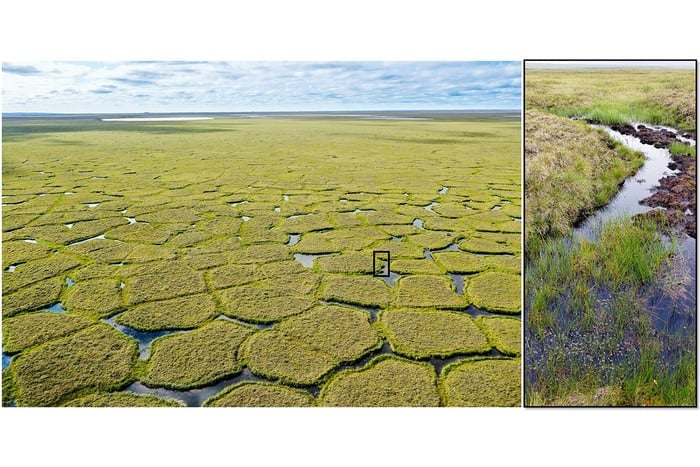While climate change is the primary driver of permafrost degradation in Arctic Alaska, a new analysis of 70 years of data reveals that tundra fires are accelerating that decline, contributing disproportionately to a phenomenon known as “thermokarst,” the abrupt collapse of ice-rich permafrost as a result of thawing.
Reported in the journal One Earth, the study is the first to calculate the role of fire on permafrost integrity over so many decades, the researchers say.
The Arctic permafrost is a vast storehouse of frozen plant and animal matter, a carbon stockpile that, if thawed and degraded, could more than double the amount of carbon in the atmosphere, researchers say.
“This process, because it’s very unpredictable, is poorly understood,” said Yaping Chen, a former graduate student at the University of Illinois Urbana-Champaign, who led the research with Mark Lara, a U. of I. professor of plant biology and of geography and geographic information science, and Feng Sheng Hu, a U. of I. professor emeritus of plant biology and current dean of arts and sciences at Washington University in St. Louis.
“With this study, we’re advancing our understanding of the permafrost ecosystem,” said Chen, now a postdoctoral researcher at the Virginia Institute of Marine Science in the College of William and Mary.
The team analyzed seven decades of air and satellite imagery to calculate the rate of thermokarst formation in different regions of Arctic Alaska. Researchers also used machine-learning-based modeling to determine the relative contributions of climate change, fire disturbance and landscape features to observed permafrost declines.
“We found that thermokarst formation has accelerated by 60% since the 1950s,” Chen said. “Although climate change is the main driver of thermokarst acceleration, fire played a disproportionately large role in that process. Fire burned only 3% of the Arctic landscape in that time period but was responsible for more than 10% of thermokarst formation.”
Repeated fires in the same areas continued to damage the tundra but did not further accelerate thermokarst formation, the researchers found. The study revealed that a single fire could accelerate thermokarst formation for several decades.
“Models predict that thermokarst will only increase with climate change,” Lara said. “In addition to thawing permafrost, climate warming dries out the tundra, increasing its flammability. This makes it more likely that lightning strikes will spark fires, causing even more permafrost degradation.”
Thawing and collapsing permafrost also leads to other landscape changes, Lara said. For example, lakes sitting in frozen permafrost depressions may drain – gradually or suddenly – when that permafrost degrades.
“The loss of permafrost can open up the floodgates of environmental change,” he said.
The National Science Foundation supported this research.


